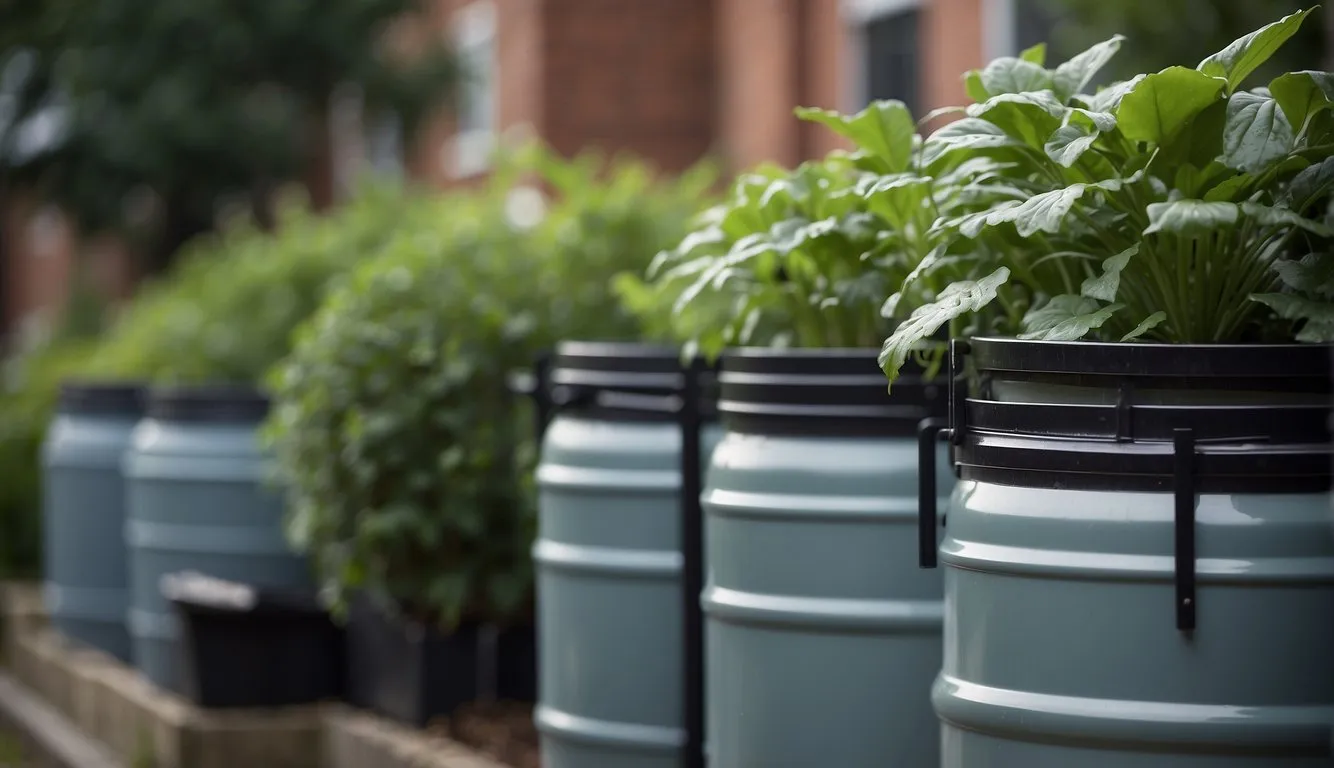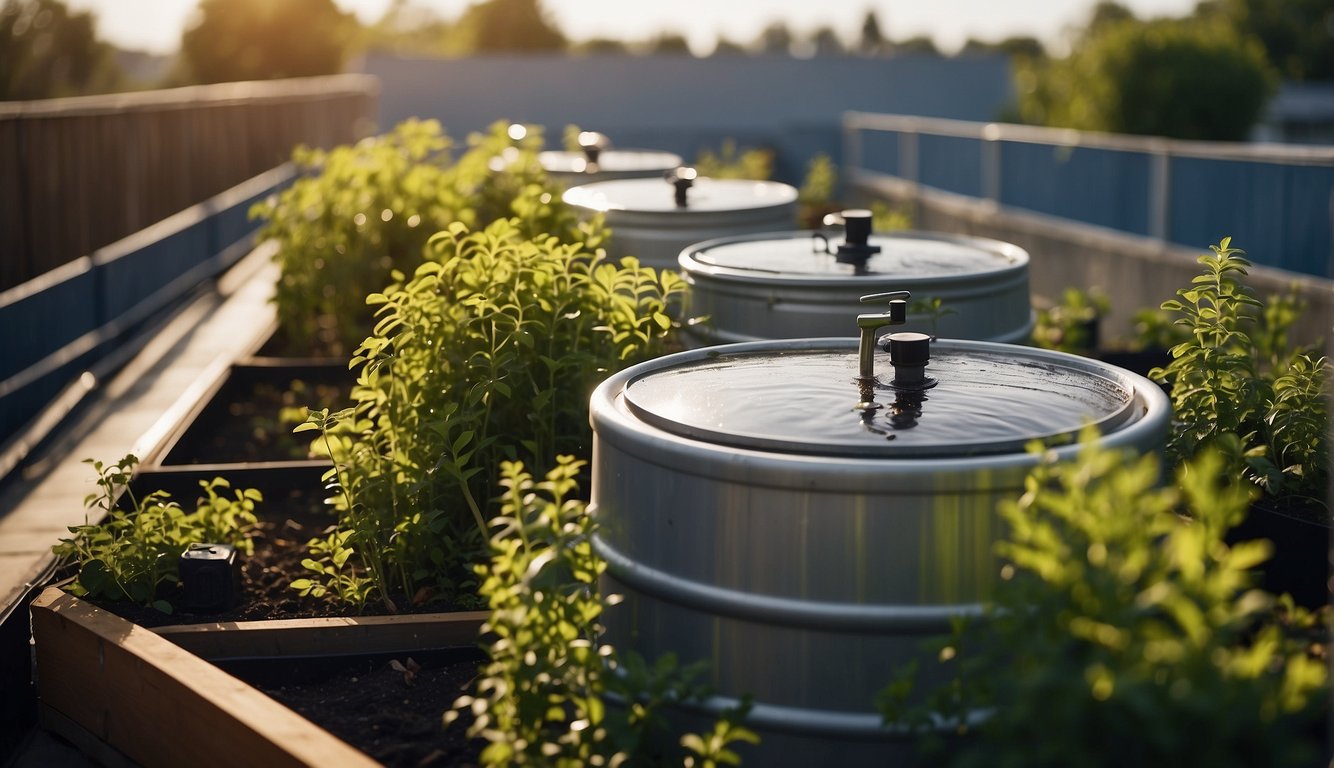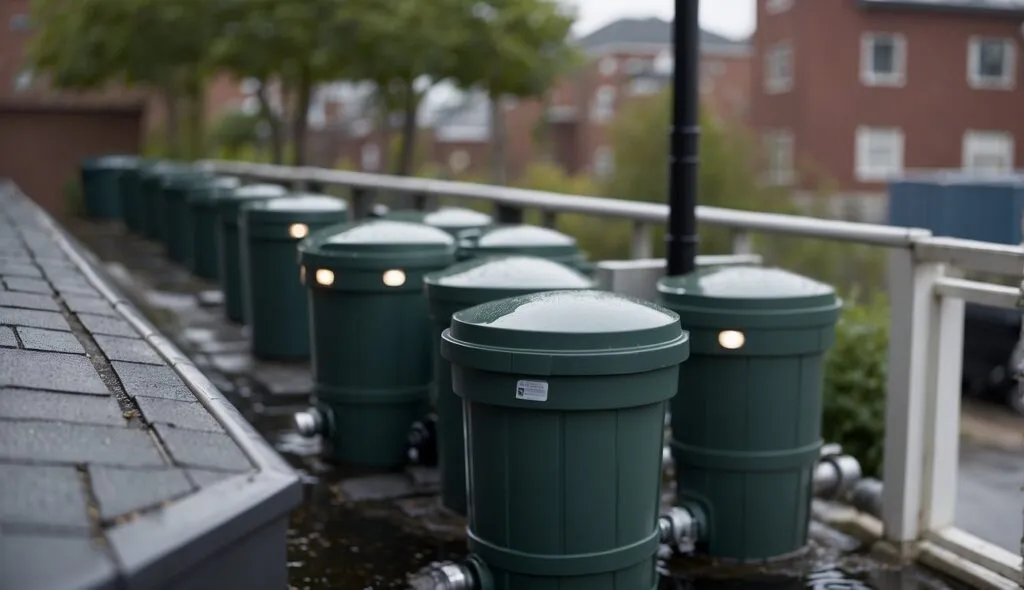Urban rainwater storage is becoming increasingly important as cities grow and water resources become scarcer. Rainwater harvesting is the process of collecting and storing rainwater for later use, and it can be an effective way to conserve water and reduce your environmental impact. In this article, we will explore some urban rainwater storage ideas that can help you make the most of this valuable resource.

Understanding rainwater harvesting is the first step in creating an effective urban rainwater storage system. It involves collecting rainwater from rooftops, gutters, and other surfaces, and storing it in tanks or other containers for later use. Components of rainwater collection systems include gutters, downspouts, filters, storage tanks, and pumps. Practical applications and uses of rainwater include watering plants, flushing toilets, and washing clothes, among others. However, there are also challenges and considerations to keep in mind, such as water quality, maintenance, and local regulations.
Table of Contents
Key Takeaways
- Urban rainwater storage is becoming increasingly important for water conservation and environmental sustainability.
- Understanding rainwater harvesting and the components of rainwater collection systems is essential for creating an effective storage system.
- Practical applications and uses of rainwater are numerous, but challenges and considerations such as water quality and maintenance must also be taken into account.
Understanding Rainwater Harvesting
Rainwater harvesting is an ancient practice that has been used for thousands of years to collect and store rainwater for later use. It is a sustainable solution to water management challenges and is experiencing a resurgence in popularity due to its environmental and economic benefits. In this section, we will explore the history and traditional methods of rainwater harvesting, as well as the benefits it provides.
History and Traditional Methods
Rainwater harvesting has been used for centuries in many parts of the world, including India, China, and the Middle East. In ancient times, people used simple techniques to collect rainwater, such as digging pits or wells to capture runoff from roofs and other surfaces. In more recent times, rainwater harvesting has become more sophisticated, with the development of modern technologies such as gutter systems, storage tanks, and filtration systems.
Benefits of Rainwater Harvesting
Rainwater harvesting provides a number of benefits, both for the environment and for individuals and communities. Here are some of the key benefits of rainwater harvesting:
Sustainable Water Supply: Rainwater harvesting provides a sustainable source of water that can be used for a variety of purposes, including irrigation, drinking, and sanitation. By using rainwater instead of groundwater or municipal water supplies, we can reduce our dependence on these resources and help to conserve them for future generations.
Reduced Flooding and Erosion: By capturing rainwater, we can reduce the amount of runoff that flows into rivers and streams, which can cause flooding and erosion. This helps to protect our communities and our natural resources.
Lower Water Bills: By using rainwater for non-potable purposes such as irrigation or flushing toilets, we can reduce our water bills and save money.
Improved Water Quality: Rainwater is naturally soft and free of many contaminants that are found in groundwater or municipal water supplies. By using rainwater, we can improve the quality of our water and reduce the need for expensive filtration systems.
Overall, rainwater harvesting is a simple and effective way to conserve water and protect our environment. By using this ancient practice and modern technology, we can create a sustainable water supply for ourselves and future generations.
Components of Rainwater Collection Systems
Rainwater collection systems have four major components that work together to collect, filter, and store rainwater for later use. These components include catchment areas, conveyance systems, storage solutions, and filtration and purification systems.
Catchment Areas
The catchment area is the surface on which rainwater falls and is collected. In most cases, the catchment area is the roof of a building. The roof should be made of a material that is safe for collecting rainwater, such as asphalt shingles, metal, or tile. The roof should also be sloped to allow rainwater to flow into gutters and downspouts.
Conveyance Systems
Conveyance systems are the gutters and downspouts that collect rainwater from the catchment area and direct it into a storage tank or cistern. Gutters should be properly sized to handle the amount of rainwater that falls on the roof. Downspouts should be positioned to direct rainwater away from the foundation of the building.
Storage Solutions
Storage solutions for rainwater collection systems include rain barrels, cisterns, and water tanks. Rain barrels are small, above-ground containers that can hold up to 100 gallons of rainwater. Cisterns and water tanks can hold much larger volumes of rainwater and can be installed above or below ground.
Filtration and Purification
Filtration and purification systems are used to remove debris, sediment, and other contaminants from rainwater before it is used. Filtration systems can be as simple as a mesh screen or as complex as a multi-stage filtration system. Purification systems can be used to remove bacteria, viruses, and other pathogens from rainwater.
Overall, rainwater collection systems are an effective way to conserve water and reduce water bills. With the right components and proper installation, rainwater collection systems can provide a reliable source of water for irrigation, household use, and other applications.
Practical Applications and Uses

When it comes to urban rainwater storage, there are a variety of practical applications and uses. In this section, we will explore some of the most common ways that rainwater can be collected and utilized in urban areas.
Potable and Non-Potable Uses
One of the most obvious uses for collected rainwater is as a source of potable water. While it is important to note that rainwater should always be treated before being consumed, it can be a valuable source of drinking water in areas where access to clean water is limited. In addition to potable uses, rainwater can also be used for non-potable purposes such as toilet flushing, laundry, and cleaning.
Agriculture and Irrigation
Another common use for collected rainwater is in agriculture and irrigation. By collecting rainwater, urban farmers and gardeners can reduce their reliance on municipal water supplies and conserve water during dry spells. Rainwater can also be used to irrigate public parks and green spaces, helping to keep these areas lush and healthy without putting additional strain on the municipal water supply.
Urban Planning and Sustainable Living
Finally, rainwater storage can play an important role in urban planning and sustainable living. By collecting rainwater, cities can reduce the strain on their water infrastructure and help to mitigate the effects of droughts and other water shortages. Additionally, rainwater storage can be incorporated into green building design, helping to reduce the environmental impact of urban development and promote sustainable living practices.
Overall, there are a variety of practical applications and uses for urban rainwater storage. Whether it’s for potable or non-potable purposes, agriculture and irrigation, or urban planning and sustainable living, rainwater collection can help to conserve water and promote a more sustainable future for us all.
Challenges and Considerations

When it comes to urban rainwater storage, there are several challenges and considerations to keep in mind. In this section, we will discuss some of the most important ones.
Water Quality and Safety
One of the most important considerations when it comes to urban rainwater storage is water quality and safety. Rainwater can contain pollutants, pathogens, pesticides, and minerals that can be harmful to human health. Therefore, it is essential to ensure that the water is properly treated and filtered before it is used for drinking, cooking, or other household purposes.
To ensure water quality and safety, it is important to regularly monitor the water for contaminants and pathogens. This can be done by conducting regular water quality tests and ensuring that the storage system is properly maintained and cleaned.
Legal and Environmental Regulations
Another important consideration when it comes to urban rainwater storage is legal and environmental regulations. Depending on where you live, there may be regulations that dictate how rainwater can be collected, stored, and used. It is important to be aware of these regulations and ensure that your storage system is compliant.
In addition, it is important to consider the environmental impact of your storage system. For example, if your storage system is not properly designed or maintained, it could lead to water waste or contamination. Therefore, it is important to ensure that your storage system is designed and maintained in a way that is environmentally sustainable.
Maintenance and Monitoring
Finally, regular maintenance and monitoring are essential when it comes to urban rainwater storage. Over time, storage systems can become contaminated or damaged, which can lead to water quality issues. Therefore, it is important to conduct regular maintenance and cleaning to ensure that the water remains safe to use.
In addition, it is important to regularly monitor the water quality to ensure that it remains safe. This can be done by conducting regular water quality tests and ensuring that the storage system is properly maintained and cleaned.
Overall, urban rainwater storage can be an effective way to conserve water and reduce your environmental impact. However, it is important to consider the challenges and considerations outlined in this section to ensure that your storage system is safe, legal, and environmentally sustainable.
Conclusion

In conclusion, urban rainwater storage is a game-changer in sustainable water management. As we face the climate crisis, it is essential to explore smart water solutions that can help us save water and reduce our carbon footprint. Urban rainwater storage is one such solution that can help us conserve water and reduce the burden on our water resources.
Through this article, we have explored various ideas for urban rainwater storage, including rain barrels, cisterns, green roofs, and permeable pavements. Each of these ideas has its own advantages and disadvantages, and the choice of the storage system will depend on various factors such as the size of the roof, the amount of rainfall, and the local regulations.
By implementing urban rainwater storage systems, we can not only reduce our water bills but also contribute to a more sustainable future. We can reduce the amount of water that goes into the stormwater system and prevent flooding and erosion. Moreover, we can use the stored rainwater for various non-potable purposes such as watering plants, washing cars, and flushing toilets.
Overall, we believe that urban rainwater storage is a smart and sustainable solution that can help us tackle the water challenges we face today. With the right planning and implementation, we can create a more resilient and water-wise urban environment.
Frequently Asked Questions

What are the most effective containers for storing rainwater in urban areas?
The most effective containers for storing rainwater in urban areas are those that are durable, food-grade, and UV-resistant. Some popular options include plastic drums, fiberglass tanks, and concrete cisterns. Plastic drums are the most affordable option, but they may not be as durable as other options. Fiberglass tanks are lightweight, durable, and easy to install, but they may be more expensive. Concrete cisterns are the most durable option, but they are also the most expensive.
How can I construct a rainwater harvesting system for my home?
Constructing a rainwater harvesting system for your home involves several key steps. First, you need to determine the amount of rainwater you can collect based on the size of your roof and the amount of rainfall in your area. Next, you need to choose the right containers for storing the rainwater. You will also need to install gutters and downspouts to direct the rainwater into the containers. Finally, you will need to set up a filtration system to ensure that the rainwater is safe for use.
What are the key considerations when designing a rainwater harvesting system?
When designing a rainwater harvesting system, there are several key considerations to keep in mind. First, you need to determine the amount of rainwater you can collect based on the size of your roof and the amount of rainfall in your area. Next, you need to choose the right containers for storing the rainwater. You will also need to install gutters and downspouts to direct the rainwater into the containers. Finally, you will need to set up a filtration system to ensure that the rainwater is safe for use.
Is it legal to collect and store rainwater in urban environments?
The legality of collecting and storing rainwater in urban environments varies by location. In some areas, it is perfectly legal to collect and store rainwater for personal use. In other areas, there may be restrictions on the amount of rainwater you can collect or the purposes for which you can use it. It is important to check with your local government to determine the specific regulations in your area.
How can I ensure the rainwater I collect is safe for drinking?
Rainwater collected from rooftops is generally safe for non-potable uses like watering plants and flushing toilets. However, if you plan to drink the rainwater, you will need to take additional steps to ensure its safety. This may involve installing a filtration system or treating the water with chemicals. It is important to consult with a water treatment specialist to determine the best course of action for your specific situation.
What are the best practices for maintaining a residential rainwater collection system?
To maintain a residential rainwater collection system, it is important to keep the containers clean and free of debris. You should also check the system regularly for leaks or damage. Additionally, you should monitor the quality of the collected rainwater and test it periodically to ensure that it is safe for use. Finally, you should be prepared to make any necessary repairs or upgrades to the system as needed.


